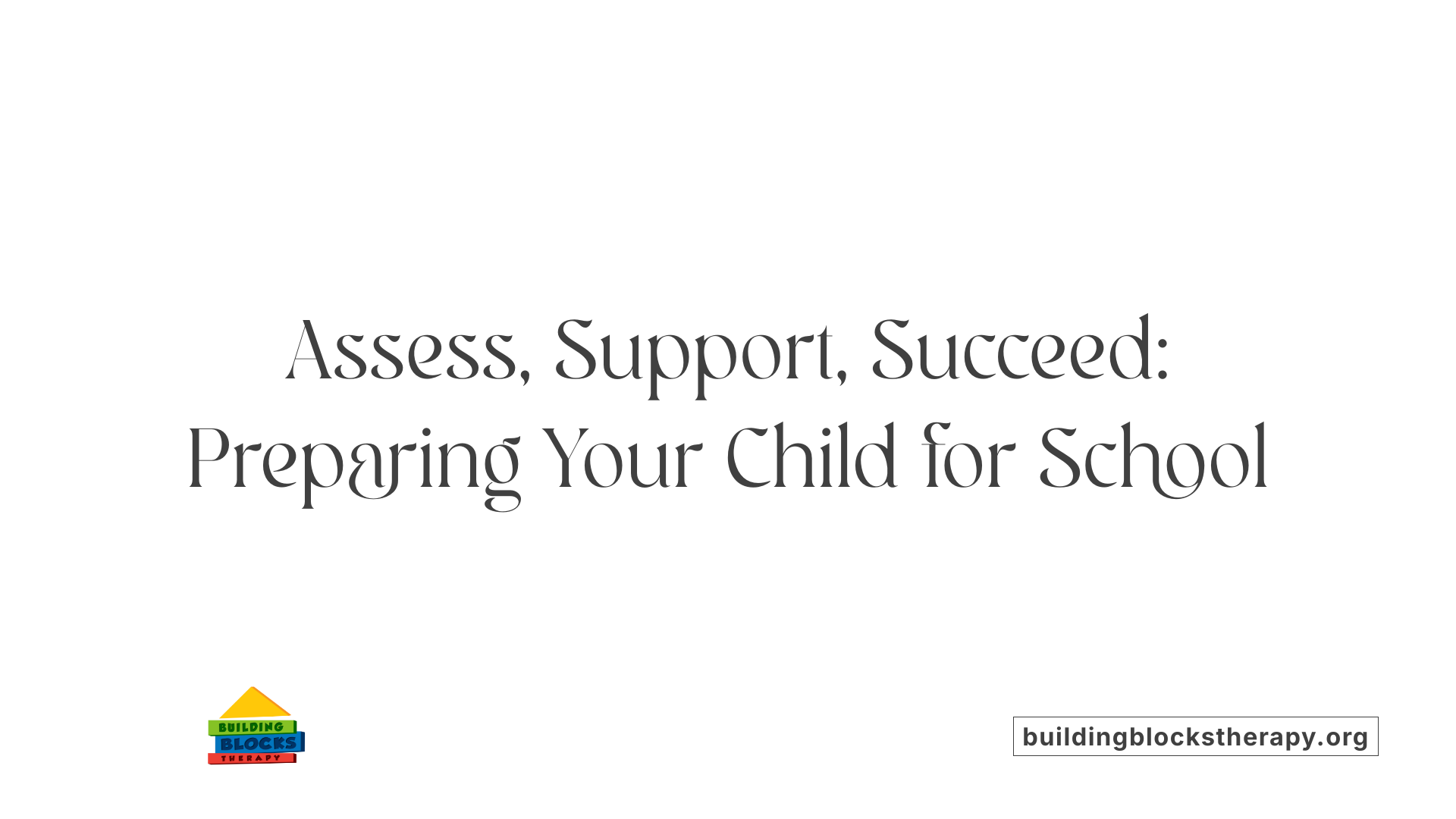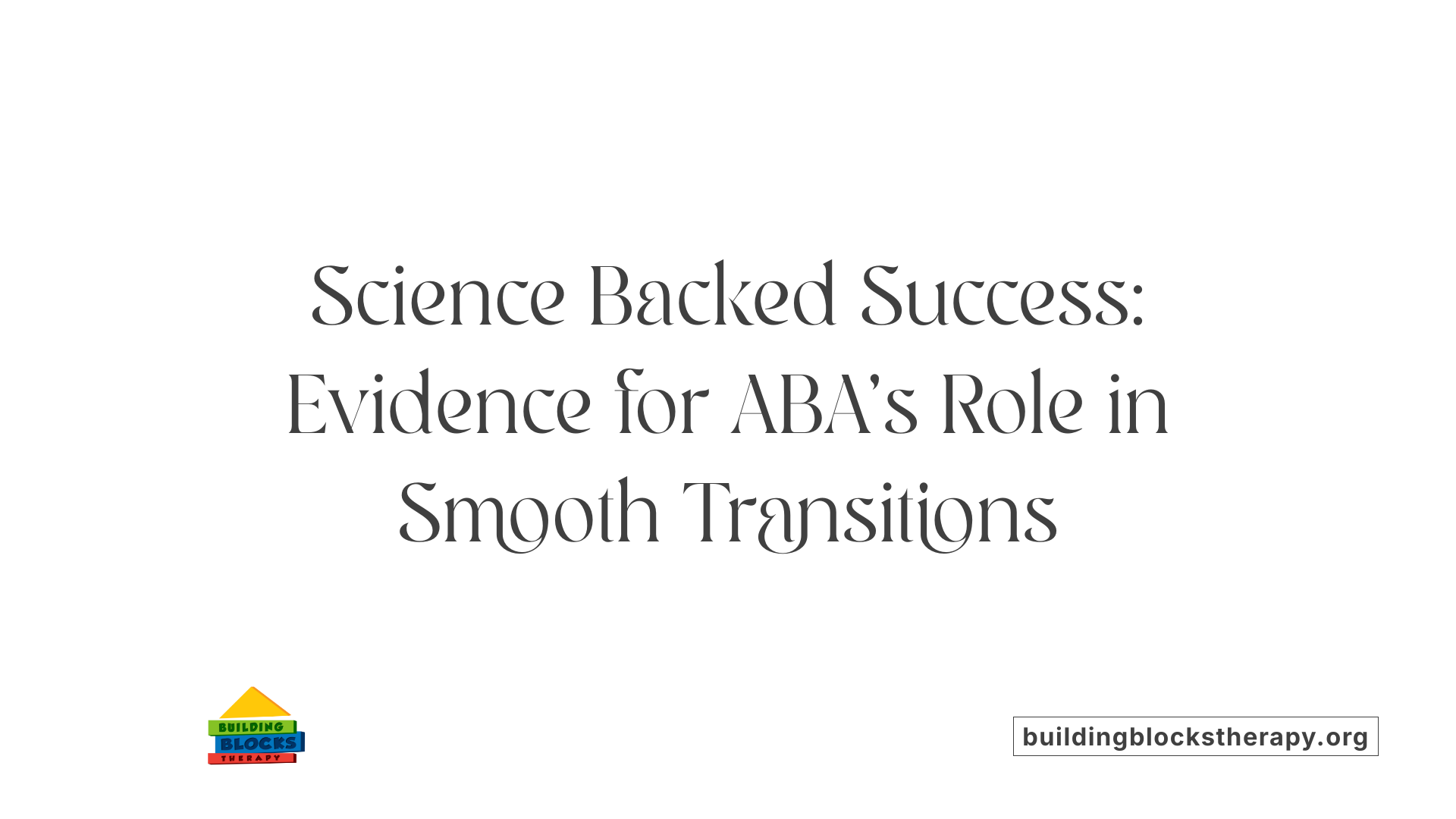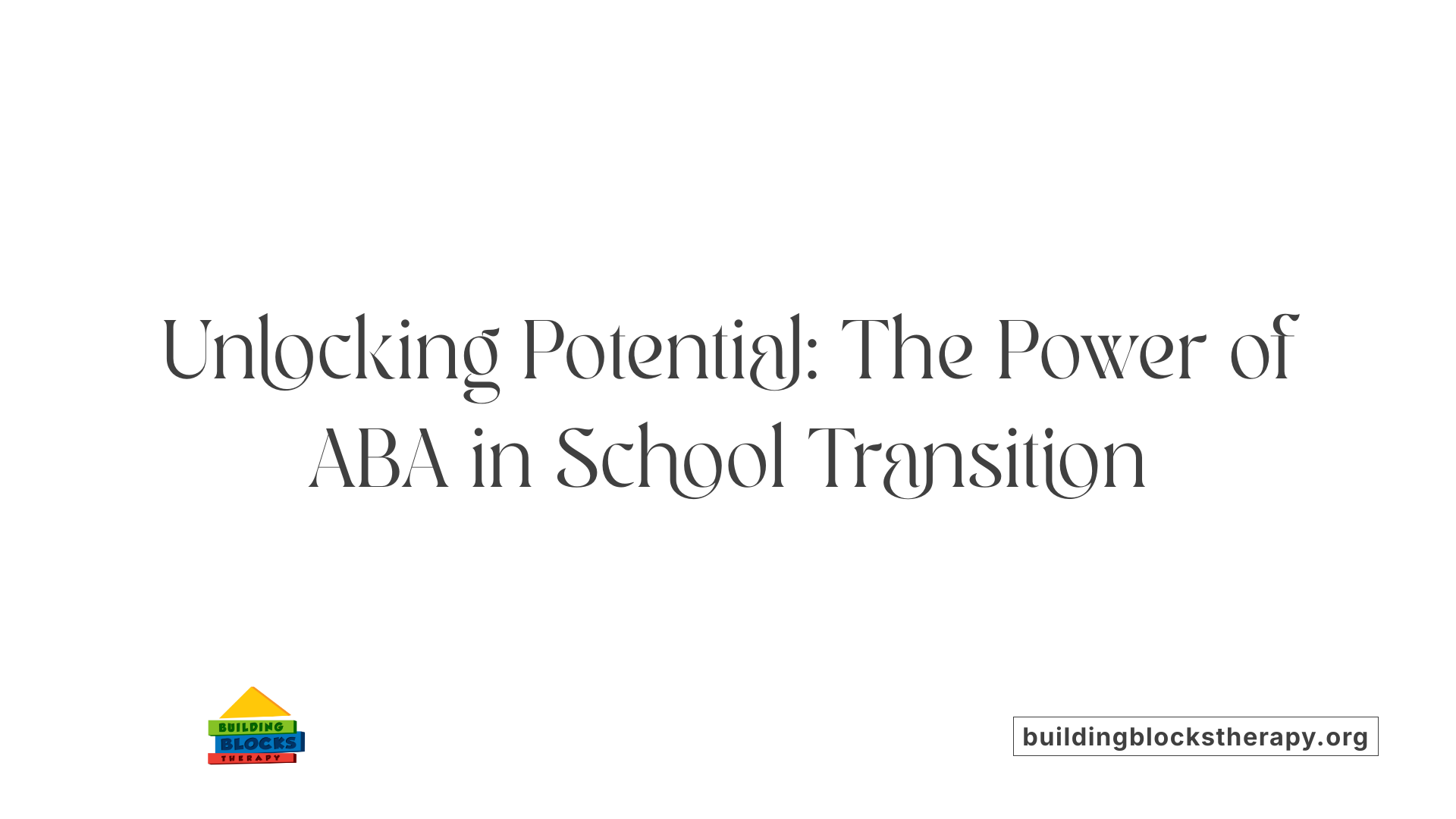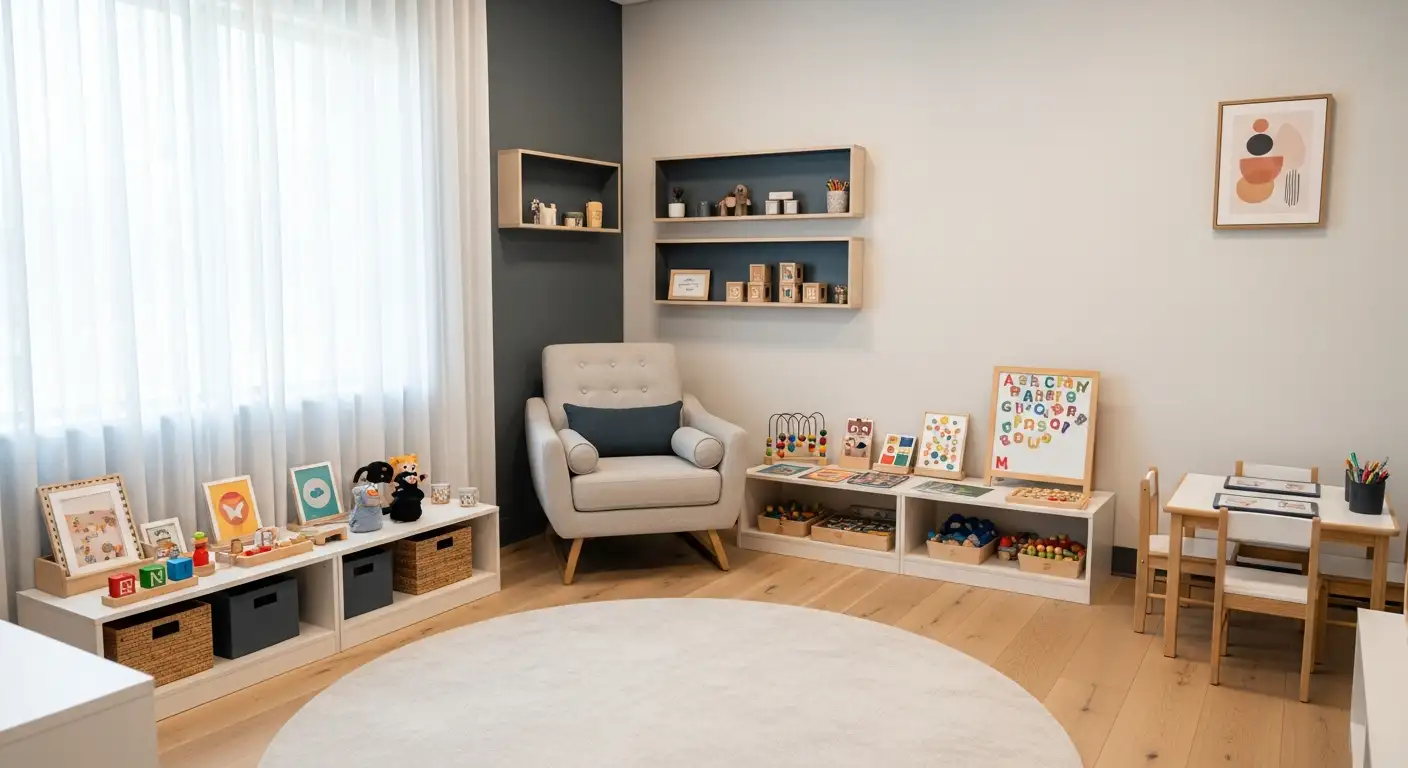The Critical Role of ABA in Educational Transitions for Children with Autism
Transitions to new school environments can be particularly challenging for children with autism spectrum disorder (ASD). ABA therapy offers comprehensive strategies that prepare, support, and empower these children, ensuring smoother and more confident adjustments to new educational settings. This article explores how ABA techniques, collaborative planning, and individualized support foster resilience and independence during such pivotal moments.
Understanding Readiness and Preparation for School Transitions

How do we assess a child's readiness for school transition?
Assessing readiness is a crucial first step in helping children with autism move smoothly from therapy to a school environment. This process involves evaluating their social, communication, and daily living skills. Higher competency in these areas often correlates with a more successful transition.
A comprehensive assessment typically looks at cognitive development, language abilities, adaptive behaviors, emotional maturity, and self-regulation skills. These evaluations help identify areas where the child may need extra support or targeted interventions.
Understanding individual strengths and challenges allows professionals to tailor support plans that promote confidence and independence.
What supports can facilitate children with autism during this transition?
Support strategies should be highly individualized. They include structured programs that reinforce routine understanding, socialization, and independence. Visual schedules, social stories, and role-playing can familiarize children with daily classroom routines and social expectations.
In addition, peer modeling and social skills training help children develop positive interactions with classmates. These approaches are often reinforced through ongoing practice both in therapy settings and the school environment.
Collaboration between parents, teachers, and specialists ensures consistency. Together, they work on creating a support plan that aligns with the child's needs—facilitating a smoother transition.
Why is collaboration among caregivers and educators so important?
Open communication is vital for crafting effective individualized support plans. Regular updates and shared observations about the child's behavior and progress allow adjustments that enhance comfort and learning.
Parents should be involved early in the planning process, contributing insights from therapy and daily routines at home. Teachers and support staff can then incorporate these insights into classroom strategies.
How can gradual exposure and practice visits ease the transition?
Gradual exposure involves visiting the new environment multiple times before the start date. This allows children to become familiar with the new setting at their own pace, reducing anxiety.
Practice visits, combined with role-playing activities, help children experience realistic routines and social interactions. This rehearsal builds confidence and develops necessary skills to handle the demands of school.
Visualizing the transition process
| Step | Approach | Purpose | Additional Notes |
|---|---|---|---|
| Assessment | Evaluate skills and behaviors | Identify strengths and needs | Conducted by specialists, involves parents and teachers |
| Planning | Develop tailored support strategies | Address individual challenges | Includes social skills training, visual aids |
| Preparation | Practice visits, role-playing | Reduce anxiety, teach routines | Use of visual schedules, transition objects |
| Implementation | Active support during school entry | Support adaptation | Continuous collaboration and monitoring |
| Review and Adjust | Ongoing evaluation | Ensure success and address new challenges | Regular communication among team members |
Effective transition planning emphasizes understanding each child's unique profile. With careful assessment, tailored supports, and collaborative efforts, children on the autism spectrum can experience more positive and less stressful changes as they begin their school journey.
Choosing the Right Educational Setting and Support Services

What considerations should be made when choosing educational settings and support services during a transition?
Selecting the most appropriate educational environment and support services for children with autism involves careful evaluation of their unique needs. It is important to consider social skills, behavioral challenges, and emotional maturity. For instance, some children might thrive in smaller, more structured settings, while others may benefit from inclusive classrooms that promote social interaction.
Parents and educators should explore different options such as public schools, private programs, or homeschooling. Each setting offers distinct advantages and challenges. Public schools often provide access to specialized services and peer interactions, while private or specialized programs may offer tailored curricula and smaller class sizes.
Implementing structured transition plans is essential. These plans often include visual schedules, social stories, and gradual exposure to new environments. Visual schedules help children anticipate daily routines, reducing anxiety and building independence. Social stories familiarize children with upcoming changes through simple language and illustrative pictures, making unfamiliar situations less intimidating.
Collaboration forms a vital part of the transition process. Families, teachers, therapists, and support staff should work together to create a consistent and supportive framework. Regular communication ensures everyone is aligned, making adjustments as needed. Support staff trained in autism interventions can implement strategies such as positive reinforcement, task breakdown, and social skills training.
Using peer modeling and social skills instruction can also promote social integration. For example, peers can serve as role models during activities, helping children learn appropriate social behaviors naturally. Teaching coping strategies like sensory tools, relaxation techniques, and self-regulation methods empowers children to handle stress and unexpected changes.
Ensuring that educational provisions are individualized is crucial. Each child's strengths, challenges, and preferences should shape the support plan. A tailored approach not only bolsters learning but also increases confidence and emotional well-being.
In summary, choosing the right educational setting and support services requires a comprehensive assessment of the child's needs and a collaborative, flexible plan. Incorporating visual tools, peer interactions, and coping skills fosters smoother transitions and sets the foundation for successful educational and social development.
Core Skills Targeted by ABA During School Transitions

Which skills are targeted by ABA therapy to assist children with autism during school changes?
ABA (Applied Behavior Analysis) therapy focuses on developing a wide array of skills to support children with autism as they transition into school environments. This tailored approach helps reduce anxiety, promote independence, and foster social interactions.
One of the primary areas targeted by ABA is communication. This includes enhancing both expressive language, such as speaking and requesting help, and receptive language, understanding instructions and social cues. Improving these skills ensures children can follow classroom routines and interact effectively.
Social skills are also a focus, with strategies aimed at teaching turn-taking, sharing, initiating conversations, and understanding nonverbal cues like gestures and facial expressions. These skills are essential for building positive relationships with peers and teachers.
Daily living and self-help skills are cultivated to boost independence. These include dressing, organizing belongings, using the restroom independently, and managing personal hygiene—fundamental competencies for school success.
To facilitate smooth transitions and reduce anxiety, ABA employs visual supports such as visual schedules, social stories, and timers with countdown warnings. These tools prepare children for upcoming changes and help them anticipate routines.
Moreover, ABA promotes emotional regulation and flexibility. Children learn strategies to manage stress through coping skills like deep breathing, sensory tools, and understanding how to adapt to new situations without becoming overwhelmed.
In practice, ABA therapy involves systematic skill teaching, reinforcement, and generalization—ensuring learned behaviors occur across different settings and with various people. This comprehensive approach builds confidence and resilience, making the challenge of transitioning to school less overwhelming.
Overall, ABA therapy aims to equip children with vital abilities to navigate the school environment successfully, fostering independence, socialization, and emotional well-being.
| Skills Area | Focused Strategies | Outcomes | |--------------|---------------------|----------| | Communication | Teaching expressive and receptive language, asking for help | Better classroom understanding and participation | | Social Skills | Turn-taking, initiating interactions, understanding cues | Improved peer relationships | | Daily Living | Dressing, toileting, organizing supplies | Greater independence | | Anxiety & Behavior | Visual supports, timers, social stories | Reduced stress and maladaptive behaviors | | Flexibility & Regulation | Coping strategies, sensory tools | Increased adaptability and emotional resilience |
This holistic training makes use of personalized assessments to create effective, child-specific intervention plans, ensuring meaningful progress during the school transition period.
Evidence Supporting ABA's Effectiveness During School Transitions

What evidence supports the effectiveness of ABA therapy during school transitions for children with autism?
Empirical research has shown that Applied Behavior Analysis (ABA) therapy significantly benefits children with autism during school transitions. Studies demonstrate notable improvements in children's ability to adapt to new environments, communicate effectively, and develop essential social skills.
One of the most compelling factors is the reduction in problematic behaviors, such as elopement (running away) and aggression, which often hinder successful transitions. ABA's structured approach, which emphasizes positive reinforcement and skill-building, helps children feel more secure and confident.
Research highlights that intensive, long-term ABA programs—typically involving 25 to 40 hours per week over one to three years—yield meaningful improvements in a child's cognitive abilities, language, and daily living skills. These interventions are tailored to individual needs, often including detailed data collection and continuous assessment to track progress.
A core methodology in ABA consists of using cue systems and prompts, such as timers, visual schedules, and auditory signals like personal digital assistants, to boost independence. These techniques prepare children for upcoming changes, making transitions smoother and less stressful.
Qualified professionals, especially Board Certified Behavior Analysts (BCBAs), oversee these programs, ensuring each child's unique strengths and challenges are addressed through personalized plans. Data-driven decisions allow for adjustments that optimize outcomes.
In summary, robust scientific evidence confirms that ABA strategies—when implemented consistently and comprehensively—are effective in easing school transitions for children with autism, leading to safer, more positive experiences and fostering greater independence.
| Aspect | Impact | Additional Details |
|---|---|---|
| Adaptability | Improved transition handling | Use of visual schedules, timers, and practice |
| Communication | Better expressive and receptive skills | Incorporation of language exercises within routines |
| Social Skills | Increased peer interaction and cooperation | Social stories and role-playing |
| Behavior Management | Reduction of problematic behaviors | Positive reinforcement and behavior tracking |
| Program Intensity | Long-term gains | 25-40 hours/week over 1-3 years |
| Methods | Data collection and program tailoring | Continuous progress monitoring and individualized plans |
Research continues to reinforce the value of ABA in supporting children with autism through transitions, emphasizing the importance of early, consistent, and tailored interventions for optimal results.
Benefits of ABA Therapy in Supporting Children to Adapt Effectively

What are the benefits of ABA therapy in helping children with autism adapt to new educational environments?
Applied Behavior Analysis (ABA) therapy plays a crucial role in preparing children with autism for transitions to new educational settings. One of its main advantages is enhancing a child's ability to focus on tasks and follow directions, which is vital for participating effectively in classroom activities.
ABA techniques such as visual schedules, timers, and positive reinforcement help children understand what to expect during transitions. Visual schedules allow children to anticipate upcoming activities, reducing confusion and stress. Timers and countdown warnings prepare them for changes, giving a clear signal that a transition is imminent.
By breaking down complex tasks into smaller, manageable steps, ABA therapy encourages independence and confidence. This approach supports children in completing daily routines like dress-up, eating, and asking for help, which are essential skills for adapting to school routines.
Safety and emotional resiliency are also bolstered through ABA strategies. The use of transition objects, like familiar toys or pictures, offers comfort during change. Gradual exposure and role-playing help desensitize children to new environments, making them feel safer and more comfortable.
Collaboration with school staff is another benefit. ABA therapists often work with teachers to ensure that progress made during therapy aligns with classroom expectations. This coordination fosters consistency and provides a support system for the child.
Moreover, ABA therapy emphasizes building communication skills and social interaction, which are often challenging areas for children with autism. Learning to interact with peers or understand classroom rules boosts engagement and social inclusion.
In summary, ABA therapy equips children with autism with practical skills and coping mechanisms that make transitions more predictable and less overwhelming. This structured support helps children build resilience, independence, and positive attitudes toward new educational experiences.
How does ABA therapy support children in managing transitions and changes?
ABA therapy supports children in managing transitions and change by teaching them predictability and coping strategies. For example, therapists may teach children to use sensory tools or deep breathing techniques during moments of anxiety.
Practicing transition routines through role-playing allows children to experience changes in a controlled environment, helping them to understand and adapt gradually. This repeated exposure fosters familiarity and reduces fear.
In addition, establishing consistent routines and visual cues helps children build habits, making transitions less stressful. The use of reinforcement, such as small rewards or praise, encourages positive behavior during change.
For children moving from in-home therapy to school, early planning and collaboration with educators are essential. A gradual 'titration of services'—where support decreases as the child becomes more comfortable—promotes independence without sacrificing support.
The overall goal of ABA intervention is to make transitions smoother, more predictable, and less anxiety-provoking—empowering children with skills that enable them to face new environments confidently.
What specific skills are taught to help children adjust to school settings?
ABA therapy focuses on teaching a broad range of skills critical for school success, including understanding classroom routines, following directions, and participating in activities like circle time or group work.
Children learn to independently manage daily routines such as dressing, eating, and asking for assistance.
Improvements in communication facilitate better interaction with peers and adults, essential for social integration.
Generalizing acquired skills across different environments—home, therapy, school—ensures that children can apply what they learn broadly.
By promoting social skills and independence, ABA therapy helps children navigate the social and behavioral demands of school, reducing frustration and increasing engagement.
How do visual schedules and other tools reduce anxiety during transitions?
Tools like visual schedules, timers, and transition warnings serve as visual or auditory cues that prepare children for upcoming changes. Visual schedules depict daily activities with pictures, helping children anticipate and understand what will happen next.
Timers and countdowns provide a clear indication of how long an activity will last, giving children a sense of control and reducing uncertainty.
Transition objects comfort children and provide continuity when routines change. For example, a familiar toy or picture can ease anxiety.
By establishing clear expectations and providing visual or sensory cues, these tools create a predictable environment, which significantly decreases stress and anxiety during transitions.
Are there additional supports that facilitate successful transitions?
Yes. Collaboration with teachers and families ensures consistency and reinforces learned behaviors. Practicing routines in familiar settings before transitioning to new environments can build confidence.
Parent training and access to social skills resources help families support their children outside therapy sessions.
In-home ABA support allows children to practice skills in familiar surroundings, reinforcing learning.
Regular monitoring and adaptation of strategies ensure that support remains aligned with each child’s evolving needs, promoting smoother transitions.
| Strategy | Purpose | Examples |
|---|---|---|
| Visual schedules | Prepare child for upcoming activities | Picture charts of daily routines |
| Timers and warnings | Signal transition times | Countdown clocks |
| Transition objects | Provide comfort and security | Favorite toys, pictures |
| Role-playing and practice | Desensitize children to change | Drills mimicking school routines |
| Collaboration with staff | Ensure consistency and support | Teacher-therapist meetings |
| Teaching coping skills | Empower children to manage stress | Deep breathing, sensory tools |
This comprehensive approach, tailored to each child's needs, fosters successful adaptation in school and social environments, enabling children with autism to thrive with confidence.
The Critical Role of Collaboration and Planning in Transition Success

How can collaboration between ABA therapists, parents, and schools be optimized during a child's transition to a new school?
Successful transitions for children with autism depend heavily on the teamwork among ABA therapists, parents, and school staff. To optimize collaboration, open and consistent communication channels must be established. Regular meetings, updates, and shared documentation ensure everyone stays informed about the child's progress, challenges, and changing needs.
Aligning goals across all parties is crucial. When therapists, parents, and teachers work together to set common objectives, strategies become more cohesive, making it easier for the child to apply learned skills across different settings. Joint planning sessions can help develop customized support plans that reflect the child's unique needs.
Involving teachers and school staff in training sessions led by ABA professionals can promote understanding of behavioral strategies and reinforce consistency. When parents are engaged through training and ongoing support, they can confidently implement techniques at home, further strengthening the child's adaptive skills.
Building trust and mutual respect among all stakeholders lays the foundation for effective teamwork. When everyone shares a common vision and communicates openly, the child benefits from a seamless, supportive environment that fosters confidence, independence, and successful adaptation to new school settings.
Shared goals and consistent strategies
Establishing shared objectives and standardizing routines helps in creating a predictable environment for children. Consistency in teaching methods and reinforcement strategies across home and school minimizes confusion and anxiety.
Parent training and access to resources
Providing parents with training on behavioral techniques, social skills, and communication strategies empowers them to support their child's development outside of formal therapy or classroom settings. Access to resources like visual schedules, social stories, and coping tools further enhances this support.
Observation and collaboration between therapists and teachers
Therapists can observe children in their school environment, providing feedback and adjusting strategies accordingly. Regular collaboration helps identify emerging challenges and tailor interventions to the school context.
Developing and implementing support plans
Comprehensive, individualized transition plans involving all stakeholders are essential. These plans should include clear goals, communication pathways, backup strategies, and scheduled reviews to monitor progress and adapt as needed.
| Aspect | Focus | Details |
|---|---|---|
| Communication | Regular updates | Scheduled meetings, shared documentation |
| Goal Alignment | Ensure cohesion | Joint planning, shared objectives |
| Training & Resources | Parent & staff training | Visual tools, behavioral strategies |
| Observation & Feedback | Ongoing assessment | School visits, therapist reports |
| Support Plan | Custom strategies | Individualized approach, scheduled reviews |
By prioritizing collaboration and structured planning, families and professionals can craft a supportive framework that makes transitions smoother and more positive for children with autism, ultimately leading to better developmental and educational outcomes.
Supporting Children with Autism Through a Seamless Transition
ABA therapy plays a pivotal role in ensuring children with autism experience a smoother, more positive transition into new school environments. By assessing readiness, customizing plans, utilizing visual and behavioral supports, and fostering collaborative relationships, caregivers and educators can significantly reduce anxiety, promote independence, and facilitate social integration. Early intervention, continuous monitoring, and a family-centered approach are essential ingredients for success, ultimately empowering children to thrive in their educational journeys. With tailored strategies and dedicated support, children with autism can navigate school transitions confidently and build a foundation for ongoing growth and development.
References
- 10 Strategies to Ease School Transitions for Children with Autism
- Transition to school for children with autism spectrum disorder
- How In-Home ABA Therapy Helps Children Transition to School and ...
- Worried About School Support for Autism? Start Here - Metro Parent
- Making Transitions Easier: ABA Tools for Everyday Routines
- Transitioning Your Child from ABA Therapy to School - Opya
- Transitioning to School: How ABA Prepares Children with Autism for ...
- How ABA Therapy Improves Transition Skills in Children with Autism
- How ABA Therapists and Parents Can Collaborate for Maximum ...






